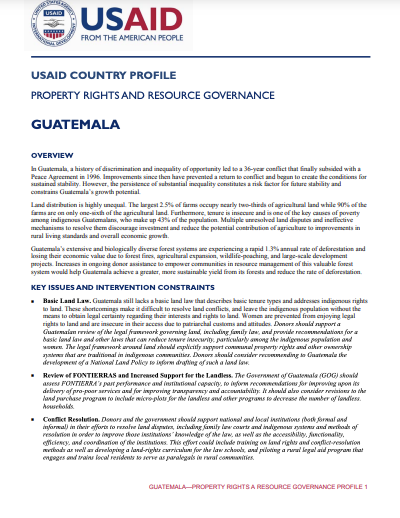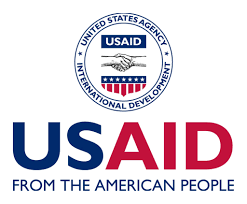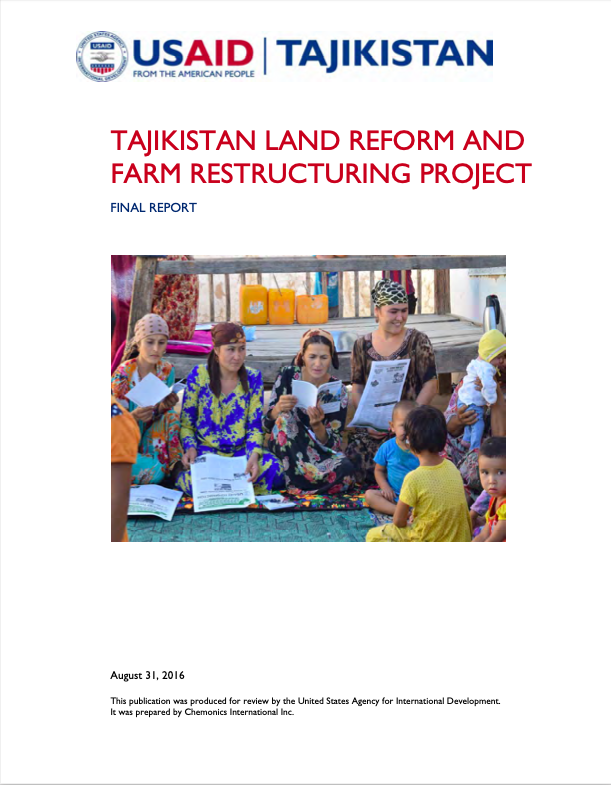Location
About Us
We envision a world in which land governance systems, both formal and informal, are effective, accessible, and responsive for all. This is possible when land tenure and property rights are recognized as critical development issues and when the United States Government and its development partners demonstrate consistent attention and a firm commitment to supporting coordinated policies and programs that clarify and strengthen the land tenure and property rights of all members of society, enabling broad-based economic growth, gender equality, reduced incidence of conflicts, enhanced food security, improved resilience to climate change, and effective natural resource management.
Mission Statement
The USAID Land Tenure and Resource Management (LTRM) Office will lead the United States Government to realize international efforts—in accordance with the U.S. Government’s Land Governance Policy—to clarify and strengthen the land tenure and property rights of all members of society—individuals, groups and legal entities, including those individuals and groups that are often marginalized, and the LTRM Office will help ensure that land governance systems are effective, accessible, and responsive. We will achieve this by testing innovative models for securing land tenure and property rights and disseminating best practice as it relates to securing land rights and improving resource governance within the USG and our development partners.
Members:
Resources
Displaying 21 - 25 of 440Climate Change Risk Profile: Azerbaijan
This profile provides an overview of climate risk issues in Azerbaijan, including how climate change will potentially impact agriculture, water resources, human health, tourism, and coastal resources and infrastructure. The brief includes an overview and climate summary of Azerbaijan, as well as projected climate changes. Also included is information on sector impacts and vulnerabilities to climate change, the policy context and information regarding ongoing climate change projects in Azerbaijan.
Property Rights and Resource Governance Guatemala
In Guatemala, a history of discrimination and inequality of opportunity led to a 36-year conflict that finally subsided with a Peace Agreement in 1996. Improvements since then have prevented a return to conflict and begun to create the conditions for sustained stability. However, the persistence of substantial inequality constitutes a risk factor for future stability and constrains Guatemala’s growth potential. Land distribution is highly unequal. The largest 2.5% of farms occupy nearly two-thirds of agricultural land while 90% of the farms are on only one-sixth of the agricultural land.
WHERE LAND MEETS THE SEA
This report provides a synoptic analysis of the legal and governance frameworks that relate to the use and management of mangrove forests globally. It highlights the range of challenges typically encountered in the governance and tenure dimensions of mangrove forest management. This assessment forms part of a broader study that includes national-level assessments in Indonesia and Tanzania. It was carried out under the USAID-funded Tenure and Global Climate Change Program.
Legitimate Land Rights
The Voluntary Guidelines for the Responsible Governance of Tenure of Land, Fisheries, and Forests in the Context of National Food Security discuss the importance of recognizing "legitimate land rights." But what does that mean and who determines which rights are "legitimate?"
Tajikistan Land Reform and Farm Restructuring Project
ABSTRACTED FROM EXECUTIVE SUMMARY: Throughout Tajikistan, land, and access to it, is paramount to continued resilience and improved livelihoods of rural citizens. Agricultural output, especially from small to medium sized farms, constitutes a disproportionately high percentage of Tajikistan’s overall Gross Domestic Product (GDP) and represents an opportunity for continued economic growth for both the farmers and the country.






